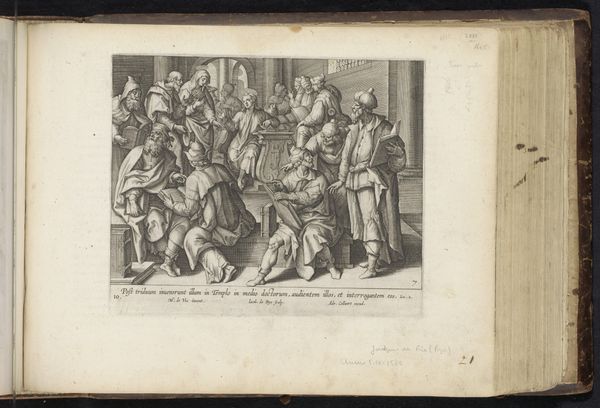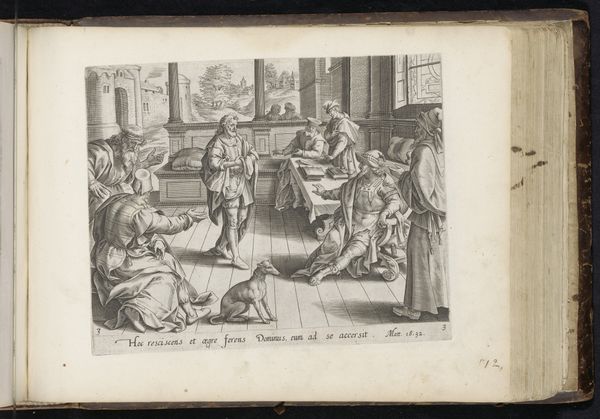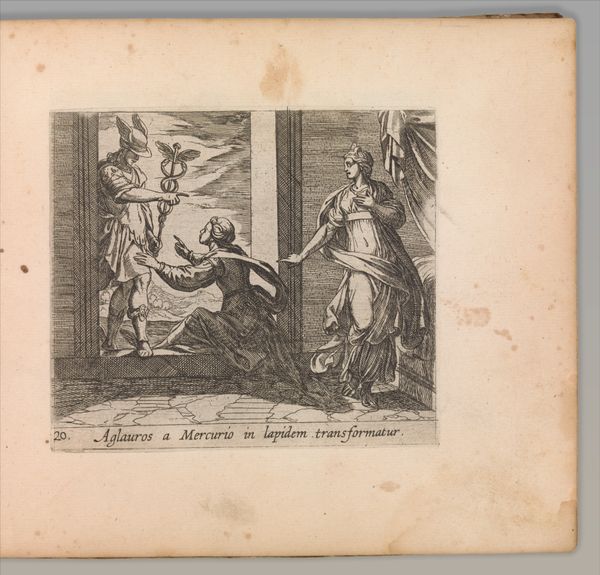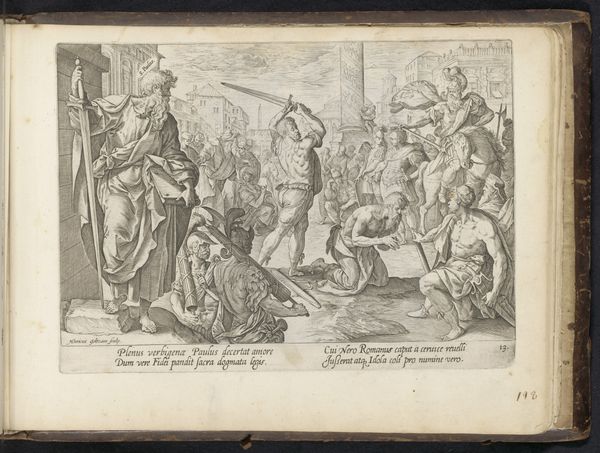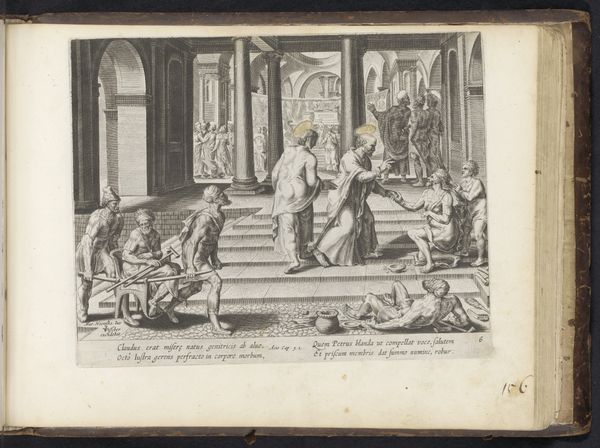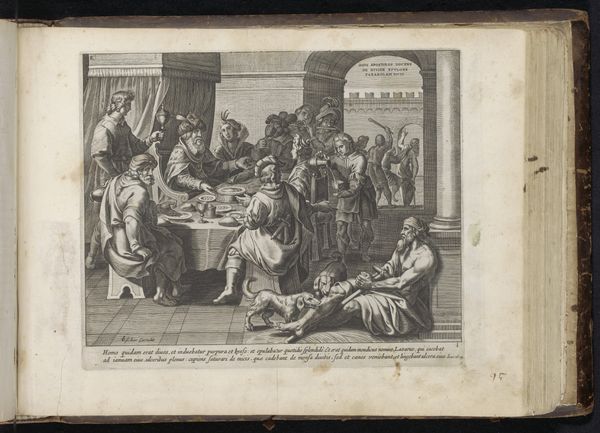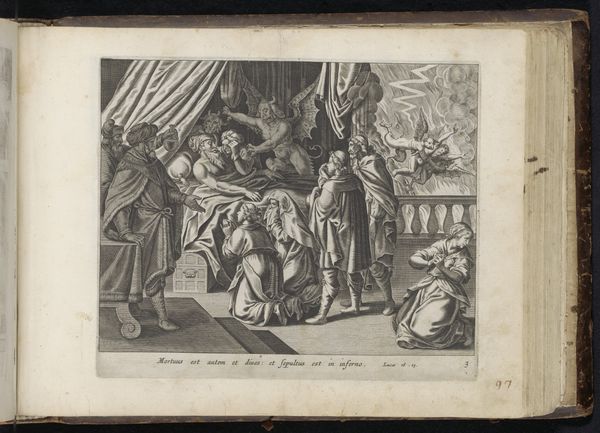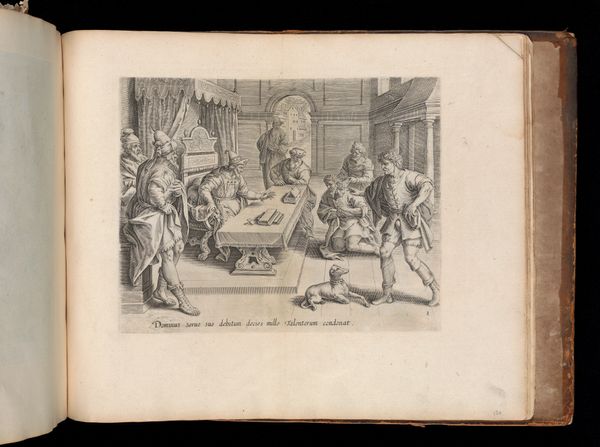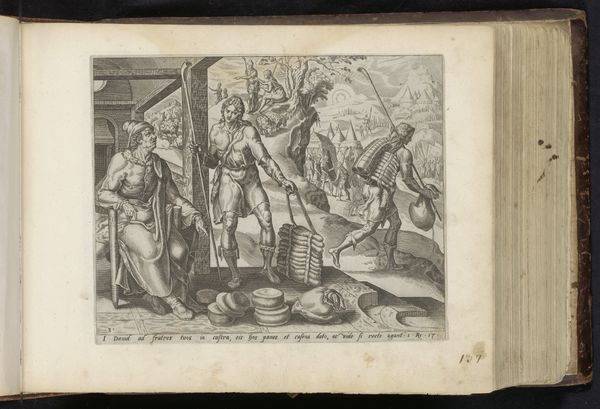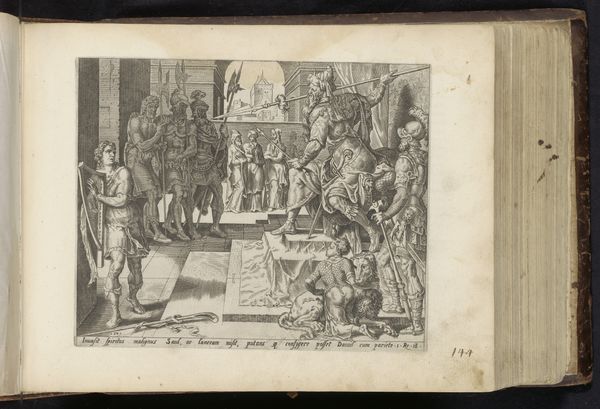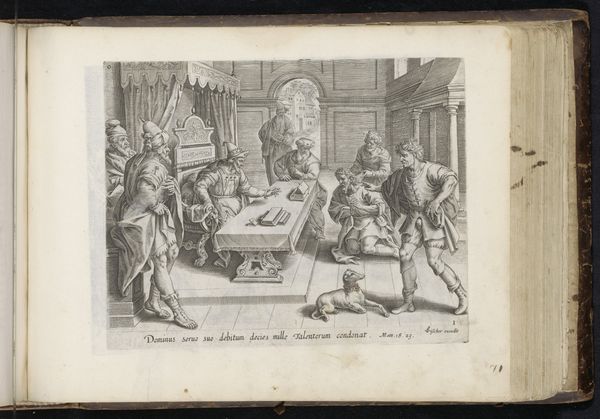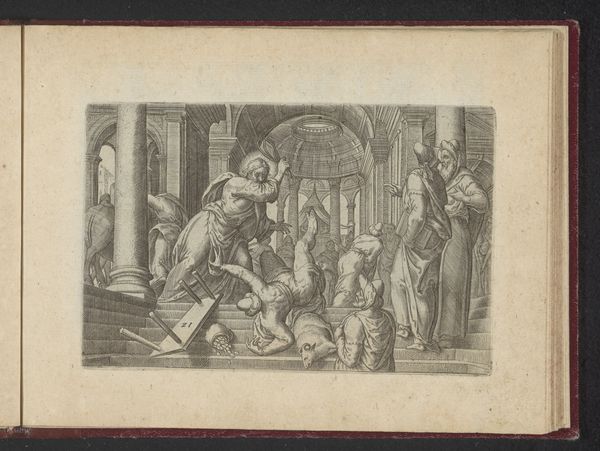
The Imprisoned Servant, from The Parable of the Unmerciful Servant, bound in Thesaurus Sacrarum historiarum Veteris et Novi Testamenti 1585
0:00
0:00
drawing, print
#
drawing
#
aged paper
#
toned paper
#
homemade paper
#
ink paper printed
# print
#
book
#
tea stained
#
stoneware
#
men
#
golden font
#
watercolor
#
historical font
#
columned text
Dimensions: Book (closed): 11 7/8 × 15 3/8 × 2 1/16 in. (30.2 × 39 × 5.3 cm) Plate: 7 13/16 × 9 13/16 in. (19.8 × 24.9 cm)
Copyright: Public Domain
Curator: This is a page from Thesaurus Sacrarum historiarum Veteris et Novi Testamenti, specifically illustrating "The Imprisoned Servant, from The Parable of the Unmerciful Servant." It's an anonymous print from 1585, now held here at The Met. Editor: The scene is stark, undeniably. All the vertical and horizontal lines in the composition form an iron grid of the prison and suggest very little dynamism within the human forms, actually. It feels rigidly medieval, both visually and emotionally. Curator: That emotional resonance is precisely the point. The parable, originating from the Gospel of Matthew, centers on themes of debt, mercy, and ultimately, divine retribution. These prints served a didactic purpose, reinforcing social hierarchies and religious doctrine in an age where access to scripture was limited. Editor: Observe how the artist uses line and shadow to delineate power dynamics. The unforgiving master, positioned on the left, gestures imperiously, directing the abuse. His stance, contrasted with that of the servant—a cluster of bowed heads, bound wrists—creates a focal point on helplessness. Curator: Absolutely. The setting itself – a claustrophobic prison – underscores the societal constraints and lack of agency faced by those in debt. Public humiliation and imprisonment were common punishments; this print, therefore, visually reinforced these realities. The architecture emphasizes a message about social power structures as much as biblical message. Editor: But there’s a peculiar quality to the paper itself. Note the slight discoloration, the way the ink bleeds ever so slightly into the fibres. Does this suggest a homemade quality, maybe even subversion? Curator: Subversion might be too strong a word here. While paper quality could vary depending on availability, it’s more likely a reflection of production standards at the time. Its imperfections humanize it, almost drawing the viewer into its world and ensuring the moral message grips the contemporary audiences all the more powerfully. Editor: I appreciate that insight. Looking at this from my point of view, and stepping back for a second, it strikes me as something of an uncanny precursor to much later works on similar subjects that show a group or class of people exploited, used, subjugated in ways meant to both convey some narrative story, as well as evoke sympathy through compositional relationships. Curator: A lot to absorb from this arresting visual. It is definitely worthwhile seeing this period "imprisoned servant" for yourself. Editor: Indeed; a journey through light, line, and social realities of an era, embedded within this humble book.
Comments
No comments
Be the first to comment and join the conversation on the ultimate creative platform.

